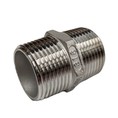Stainless steel sinks are a popular choice for kitchens due to their durability, scratch resistance, and easy-to-clean surface. However, like any product, there are some disadvantages to using a stainless steel sink. In this article, we will explore the drawbacks of stainless steel sinks and how to address them.
1. Prone to scratches and dents
While stainless steel sinks are known for their durability, they are still prone to scratches and dents. This can be due to daily use, harsh cleaning chemicals, or heavy-weighted cookware. Scratches can cause a sink to lose its shine and can harbor bacteria if not cleaned properly.
2. Noisy in operation
Stainless steel sinks can be quite noisy, particularly when washing dishes or running the faucet. The thin metal construction of the sink can produce a loud ringing sound when water hits the surface. This can be irritating to some people, especially if the sink is in an open-plan kitchen.
3. Susceptible to water spots and stains
4. Can be difficult to keep clean
5. Limited style options
1. Avoid using abrasive cleaners
To prevent scratches and damage to your sink, avoid using abrasive cleaners. Instead, use a soft scrub pad or cloth with mild soap and warm water to clean the surface. If you need to remove tough stains, consider using a non-abrasive cleaner specifically designed for stainless steel.
2. Dry the sink after each use
3. Invest in sound insulation
If the noise of your stainless steel sink is a concern, consider investing in sound insulation. This can be done by purchasing a sink with sound-deadening pads or by adding insulation to the bottom of your existing sink. This will help reduce the noise of water hitting the sink''s surface.
4. Use a protective grid
5. Consider other sink materials




